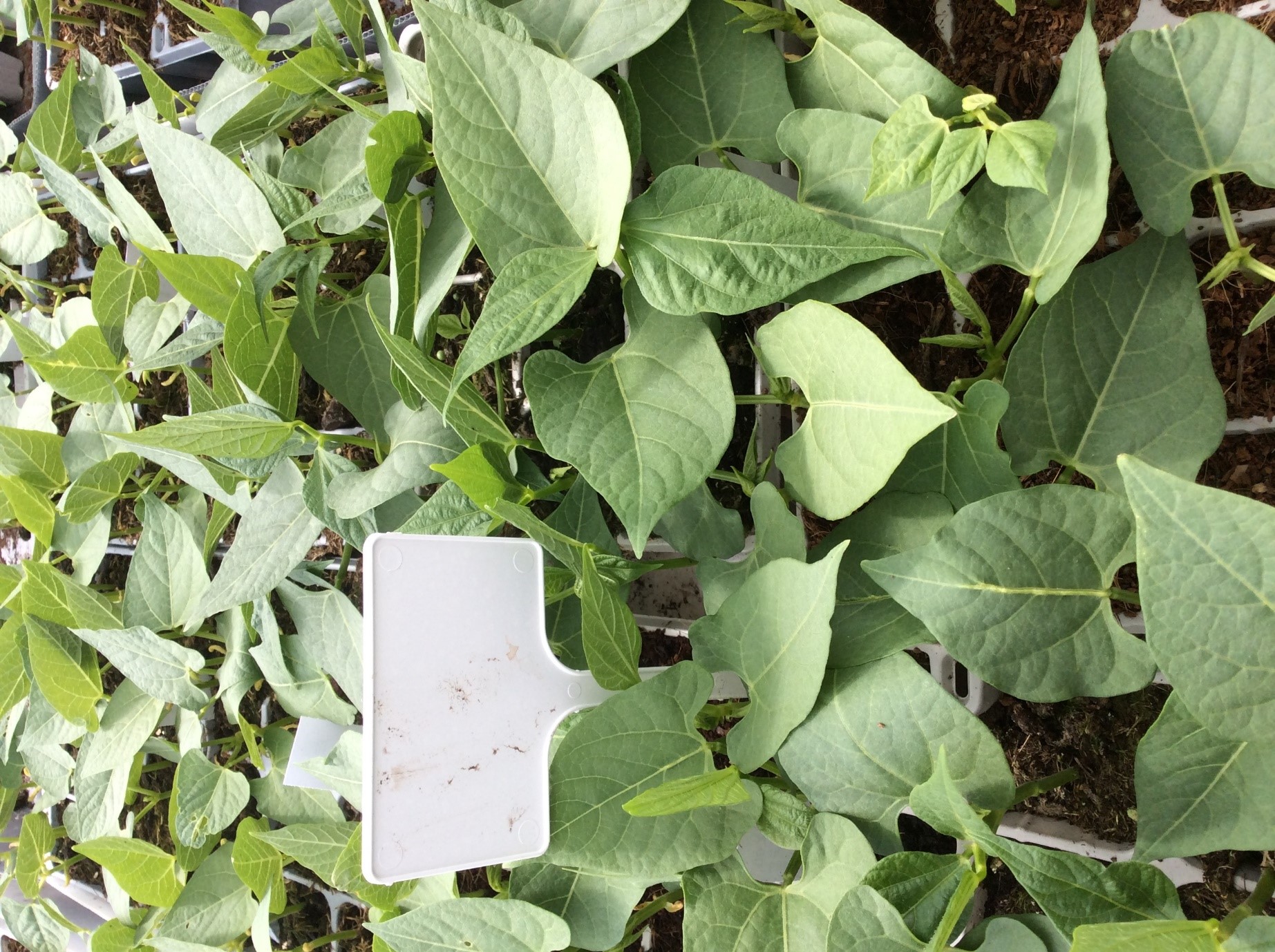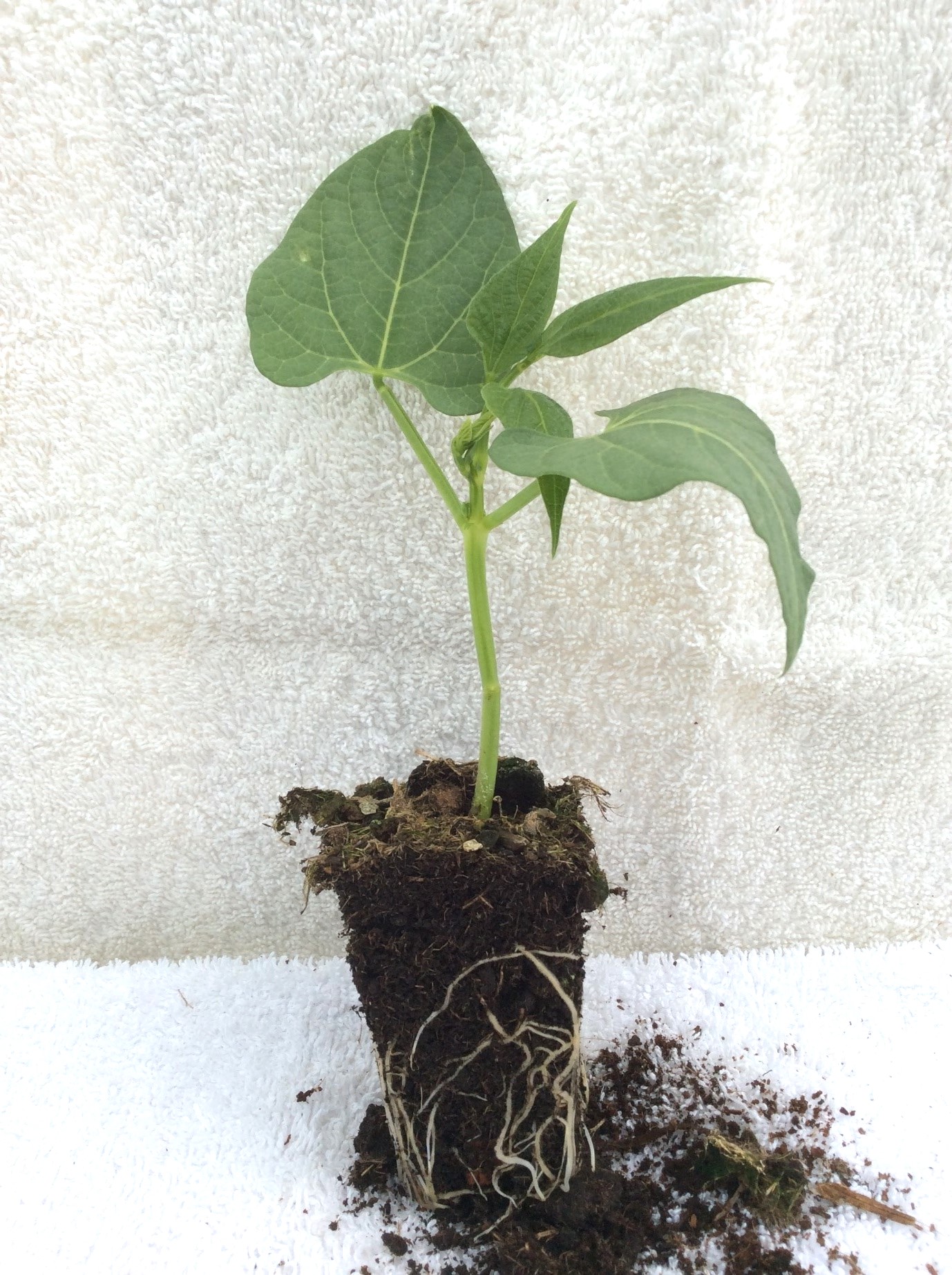Space 15-20cm apart.
Both Runner beans and French beans have dwarf/bush varieties which are ideal for growing in raised beds, pots and containers. They only grow about 40cm tall and if grown in blocks they will support each other and stay upright so that their beans are kept away from the soil.
Prepare the soil at least two weeks before planting if possible. Dig in some well-rotted farmyard manure or garden compost – about 2 bucketfuls per square meter. This will help retain the moisture and feed the beans, which are very greedy.
Once prepared cover the soil with plastic or polythene. The sun will shine on it and warm the soil up.
Plant Out
Dwarf beans are very tender so do not plant them out until all risk of frost has gone. This is usually around late May.

To give them a head start repot the seedlings from the tray into a 9cm pot, one bean per pot. The beans will grow on until it is safe to plant them outside.

Harden the beans off by putting the pots outside during the day for at least 10 days before planting in the garden.
Water the plants well before planting out so that the root ball holds together and the roots get as little disturbance as possible.
Make a hole in the soil about the size of the root ball. Without disturbing the roots, place the plant in the hole and push the soil around the root ball so that the plant is firmly held upright. Firm the soil down.
A 30cm pot will take 3 bean plants round the sides.
In raised beds space the bean plants 20cm apart in all directions.
In the vegetable garden space the beans 20cm apart in rows 40cm apart.
Water the newly planted bean gently so that the soil is soaked. Keep the soil moist, but not too wet, until the bean plant is growing well.
Water the beans in dry periods. Pots and containers should not be allowed to dry out - pay particular attention to the edges of raised beds. When the bean pods start to develop water the plants once a week.
Weed the beans regularly, particularly when the beans are short. If weeds are allowed to grow the beans will start to use them as supports.
Support the plants with sturdy twigs between the plants. Dwarf beans do benefit from a little help, particularly in a windy spot. Place 50cm twigs between the plants or in a wigwam shape. The beans will grow up between them naturally.
Pots and containers need to be heavy enough to be stable so that they are not blown over.
Bean flowers develop into bean pods when the flowers have been pollinated by insects. You need a flower to get a pod.
The more insects there are buzzing about the plants the more likely the flowers are to be pollinated.
Harvest the bean pods when they are 10-20cm long and before the shape of the beans can be seen on the pod. The bean pods should snap in half without showing any fibrous bits, and the bean seeds inside should be tiny and pale. It is better to harvest the beans too early than let them get old and stringy. If beans are left on the vine to get big and old the plants will stop producing any more. Pick the beans every few days.
To harvest the beans break them off at the stem of the pod. It may be easier to cut them off with strong scissors.
To grow dried beans follow the steps above but leave the bean pods on the plant to mature. Do not pick them until late summer or early autumn when they have dried up and the skins are crinkly. If they are not fully ripe, the vines should be cut and hung upside down in the sun. An open ended shed is best for this as they will be protected from the rain. There must be plenty of air around the vines to stop them going mouldy. When the pods have dried out, shell them and store the beans in an airtight container.
Mon - Fri 8:00am - 5:00pm
Sat & Sun 9:00am - 5:00pm
Any questions? Email us or give us a call on 01904 400092.